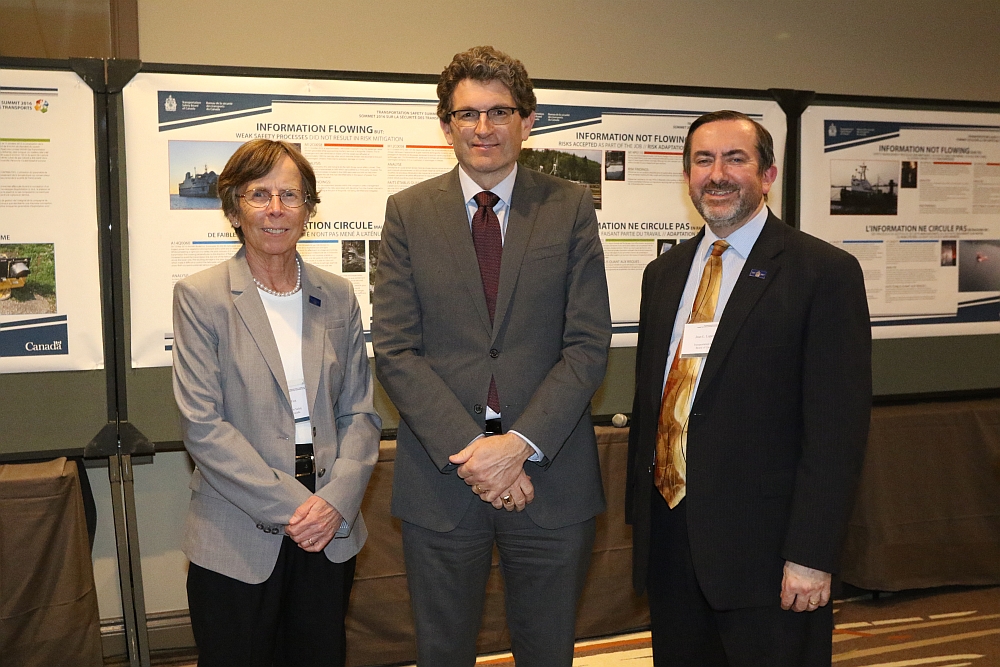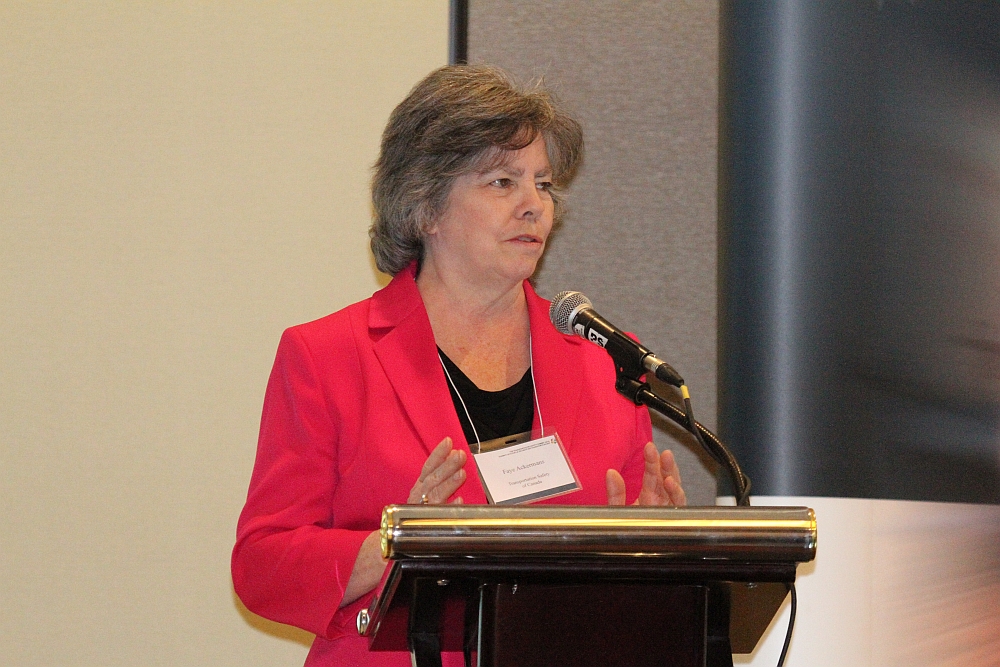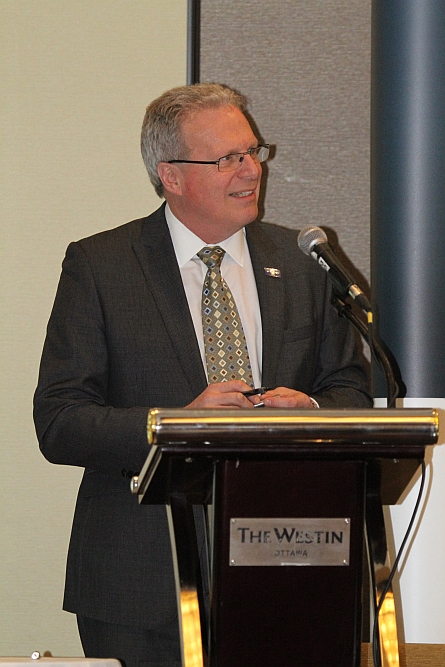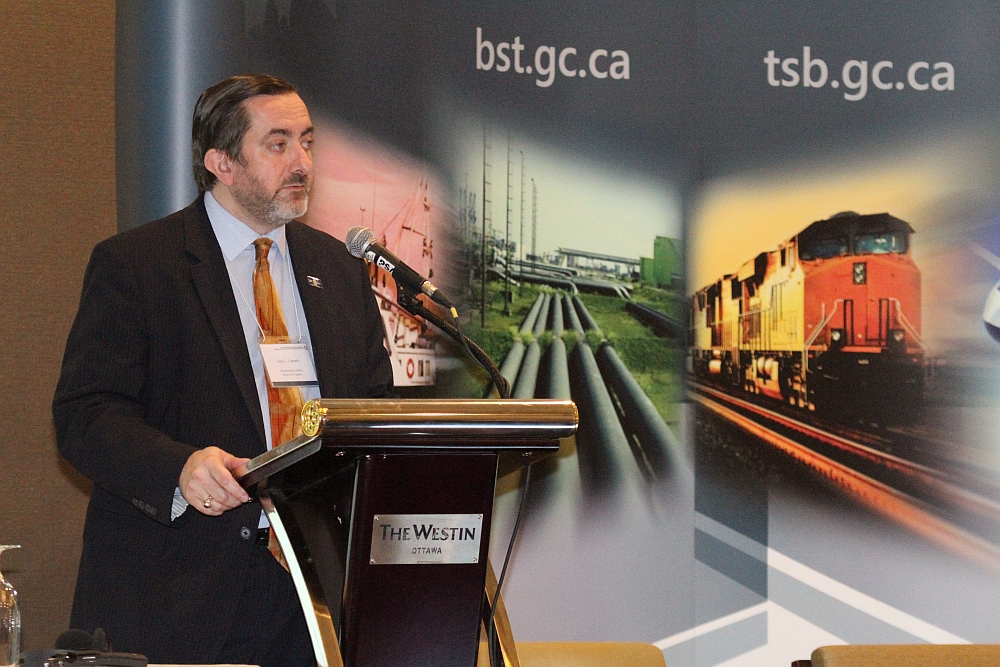In April 2016, the TSB held a Safety Summit that brought together senior Canadian transportation executives from government and the transportation industry, along with some of their bargaining agents.
The objective of the meeting was to share best practices—notably for capturing and using safety data in a proactive, non-punitive way—and to identify ways of strengthening organizational safety culture and safety management.
TSB investigations have frequently shown that organizational factors—conflicting priorities, inadequate risk analysis, or ineffective operational oversight, for instance—contribute to accidents.
And although not typically highlighted in the final reports (which tend to focus on safety deficiencies), investigations have uncovered good practices as well.
Companies sometimes share good practices with other companies in the same mode of transportation, but there is no sharing across modes. The Summit addressed that gap.
Participants left the meeting with practical approaches to implement in their own organizations to improve safety and help mitigate risks.
Proceedings
Proceedings of the TSB Transportation Safety Summit
Read the proceedings
Media
First-ever Transportation Safety Summit highlights importance of organizational information flow and safety culture
Read the news release
First-ever multi-modal TSB Transportation Safety Summit promotes important discussions on key Canadian transportation safety issues
Read the news release
Poster
Transportation Safety Summit [April 2016]
View the poster
Photos
Presentations
Thursday, 21 April 2016 — Information flow and safety culture
Kathy Fox, Chair, Transportation Safety Board of Canada: Opening remarks
The Transportation Safety Summit brings together a broad cross-section of senior Canadian transportation executives from government, and from the marine, pipeline, rail and aviation industries, including some of their bargaining agents.
Read the Chair's opening remarks
Information flow
Ron Westrum, Eastern Michigan University: Getting information flow
Using multiple examples, this presentation demonstrates how information flow is key to effective safety management. Dr. Westrum identifies three (3) key problems preventing proper information flow and recommends ways to best avoid them.
Read the text version of the presentation or view the powerpoint presentation [PDF format - 2.65 Mb]
Faye Ackermans, TSB Board Member: Statement of safety issue support: review of findings and systemic risks
Information flow was thoroughly reviewed in a sample of TSB investigations. This presentation summarizes the contributing factors that prevent effective information flow.
Read the text version of the presentation or view the powerpoint presentation [PDF format - 235 Kb]
Moving organizations towards a co-operative, trust-based relationship
Marc Beaulieu, VIA Rail: Just Culture
This presentation provides an overview of VIA Rail's efforts to establish a Just Culture, as well as an explanation of the strategies used by VIA Rail to assess discipline, enhance safety, and maintain situational awareness. VIA Rail's exemplary collaboration with the unions plays an important role in its success.
Read the text version of the presentation or view the powerpoint presentation [PDF format - 141 Kb]
Larry Lachance, NAV CANADA: Just Culture
NAV CANADA's strategy to implement a Just Culture framework is to remove the barriers to safety reporting, which has proven to be very effective. This presentation provides a list of key leadership elements, and describes NAV CANADA's own experience with safety management.
Read the text version of the presentation or view the powerpoint presentation [PDF format - 155 Kb]
Jamie Marshall, BC Ferries: SailSafe
This is a detailed presentation on the importance of safety management systems in the BC Ferries organization. It also demonstrates how the organization's members have learned, from personal experience, how to transform their safety culture into a Just Culture.
Read the text version of the presentation or view the powerpoint presentation [PDF format - 928 Kb]
Maintaining confidence in your system while encouraging information flow
Jack Davis, Mobile Inc.: "Disciplinary" case study from health care
This presentation provides a detailed analysis of a drug-related error that lead to patient fatalities, involving Calgary Health Region. It illustrates how an organization's culture has a direct impact on safety, and how to implement safety management systems in order to enhance safety.
Read the text version of the presentation or view the powerpoint presentation [PDF format - 597 Kb]
Friday, 22 April 2016 — Information flow and safety management
Using leading indicators or data source processes for a more proactive and predictive approach
Norrie Ramsay, TransCanada Pipelines: Pipeline integrity and safety: leading indicators
This presentation provides an overview of how TransCanada Pipelines manages pipeline integrity and safety through full life-cycle management, including through the use of: system-wide risk assessments, threat management, in-line inspections, and damage prevention.
Read the text version of the presentationor view the powerpoint presentation [PDF format - 358 Kb]
Paul Spring, Phoenix Heli-Flight: A business case for data recording technology
This presentation demonstrates how Phoenix Heli-Flight was able to learn from its own experience and implement data recording technologies, in order to increase safety and ensure compliance with policies and procedures.
Read the text version of the presentation or view the
[PDF format - 2.20 MB]Scott Wilson, WestJet: Safety Management
A clear demonstration that the building blocks of effective safety management are strong safety culture and in-depth data analysis.
Read the
of the presentation or view the [PDF format - 1.05 MB]On-board voice and video recorders
Kirby Jang, TSB Director of Investigations, Rail/Pipeline: Expanding the use of on-board voice and video recorders
On-board recorders play a critical role in occurrence investigations; this presentation provides an update on the ongoing study of locomotive voice and video recorders. It offers concrete examples of situations in which the use of locomotive voice and video recorders is critical, and explains how these recorders would be used in various situations.
Read the
of the presentation or view the [PDF format - 559 Kb]Jean L. Laporte, TSB Chief Operating Officer: Usage of voice and video recorders: balancing rights and obligations
This presentation provides a detailed comparison of the rights and obligations that operators must face regarding the use of voice and video recorders in today's society.
Read the
of the presentation or view the [PDF format - 249 Kb]






